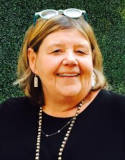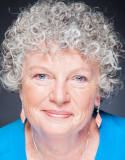How Do We Explain the Lack of Women at WSOP Main Event Final Tables?

HOW DO WE EXPLAIN THE LACK OF WOMEN AT WSOP MAIN EVENT FINAL TABLES?
Yet again, the World Series of Poker Main Event will have no females at the final table.
This marks 27 consecutive years, and 53 out of 54 times that poker’s world championship had no females in the top-9. Only Barbara Enright, in 1995, made it to poker’s promised land, finishing in 5th place. SEE VIDEO HERE
Here’s a deeper look at the data: Let’s toss out the first 25 years of WSOP Main Event results. Few females entered the Main Event in the years 1970-1994. For many tournament years, there were zero females participating. Obviously, very small fields with few females mean nothing, statistically speaking.
However, female participation grew and reached a peak around the time of the “poker boom.” In 2006, a record number of players qualified to enter via online satellites. For this reason, the number of females who entered in 2006, and overall in the 2005-2011 period was at its high.
Note: There are no official stats on the number of female entries in those years. As the former WSOP Media Director, I used to walk the floor of the Main Event in that era and conducted a head count (yes, I counted every female in the field). The highest percentage was about 5 percent of entries.
Official data I’ve seen in the last five years shows females now make up about 4 percent of WSOP Main Event entries. Accordingly, we can make a solid estimate that in the last 25 years, or so, roughly 4 percent of the field has been female. I consider this an irrefutable “best guess” estimate. It’s certainly no lower than 3 percent. It’s certainly no higher than 5 percent. So, 4 percent looks about right.
All things being equal, 4 percent of the players who cash, make the top 100, and/or make the final table should be female.
Since 1996, there have been 26 final tables played. Each table had 9 players (some years had only 6 players, but we’ll still look at the top-9 finishers). That’s 234 spots at final tables. Statistically, this means 9.36 spots should have been filled by females. The reality is — none have made the top-9. The question is why (not)?
Could this be randomness? Plain old bad luck? Perhaps that could explain these results, in part. There were 3 females that finished 10th (1998, 2000, 2012). So, a bit of luck in one of those years would have produced at least one more female finalist, and perhaps three.
What should be most alarming (and why this question is timely), is the *decline* of female success in recent years. No female has made the top-20 in the past decade. In fact, there were 12 females that finished in the top-20 between 1994 and 2012, which is a more respectable figure (2.56 pct,, which is statistically closer to the 4 percent expectation). SEE DATA HERE However, only 4 females have finished in the top-50 since 2012 — which is an abysmal figure (less than 1 percent). This year, the best female finish was 68th place. Again, this is more alarming data that reveals the game may be changing, and perhaps is getting more difficult, and yet females are not enjoying the fruits of accomplishment as much as men.
I think the “bad luck” factor can be discounted. But I’ll listen to compelling arguments to the contrary.
Does anyone want to offer an explanation or theory?
This will not be a popular topic. That’s too bad, because it’s a valid point of discussion. It deserves examination. My intent isn’t to disparage female players. We all want to see more balance and equality, and hope to celebrate progress, not only in poker and sport, but all facets of society. However, we must also look at facts and study data that deserves an unbiased analysis, and if possible, an explanation. How do we explain this obvious outlier of results based on gender?
One final thought: I couldn’t prove this, but when I worked in poker and was around the game and its players constantly for many years, my theory was the average female who entered big buy-in tournaments was typically better than her average male counterpart. Not by a sizable margin. However, females that dedicate(d) themselves to the game tend(ed) to be more serious and aren’t playing the WSOP Main Event as a bucket list item (in general). Hence, I would have expected slightly better results from female participants.
__________
POSTSCRIPT: In response, here’s an email I received from Dr. Charles Murray, author of “The Bell Curve.” Posted here without comment for consideration:
Here’s my explanation: Best practice in NLHE before around 2010 was based on Doyle’s Supersystem, with straightforward odds combined with sophisticated exploitative strategies and people-reading skills. High-level poker since around 2010 has increasingly incorporated GTO, which has three characteristics that are relevant to women’s success:
1. A much heavier math burden. The male advantage in math is zero in the middle of the bell curve but becomes quite large in the highest percentiles of ability (the right-hand tail).
2. A smaller role for reading people. Not zero by any means, but smaller. Women have an advantage over men in these skills, and it won’t affect their success at ordinary levels of poker, but it means that a semi-autistic male who plays very high-level GTO can be completely clueless at reading people but still be very successful at poker. That wasn’t true before GTO existed.
3. A much higher time demand. It’s not just the math that’s more complicated. Absorbing the information that solvers can provide is incredibly time-consuming. Today’s high-level poker rewards obsessiveness–spending hundreds of hours running scenarios on poker training websites instead of taking time off, as Doyle and others regularly did, to play golf at high stakes. Monomaniacal obsessive ambition is another trait in which males (perhaps sadly) predominate.
If you want to include my take on your website, feel free.













No female Warren Buffett’s, no Female Jeff Bezos, or Bill Gates. The Warren Buffett one is the more telling one. No female insights or words of wisdom that any society has ever pased down.
Women spend most of their time trying to attract a mate to have children with, and for women, that means appearing as physically attractive as possible, while men spend most of their lives trying to attract a mate to have children with, but since the most desireable women choose the men who are highest in the given society’s hierarchy, the men pursue those actions that tend to give them the best chance to rise in the hierarchy, and that most often involves acquiring money. Poker is all about acquiring money.
well 38 years of female only events haven’t done anything.
Women make the money in the Main Event slightly less often than they should (my data says about 1/30th of the players are women but only 1/40th of the cashers), but the best women are doing just fine.
When Barbara Enright finished fifth in 1995, she topped 98.17% of the field. Since 2005, every Last Woman Standing excepting the 2020 online pandemic year has done better than that, including Kristen Foxen’s record 98.87% this year! Even the second to last woman has surpassed Enright in fifteen of the last 20 years.
If more women played, one would certainly reach the Main Event final table soon (disappointing that it wasn’t this year because it is a bit of a chicken and egg problem).
I have much more data to share if you’re interested.
The World’s Greatest Unknown WSOP Historian